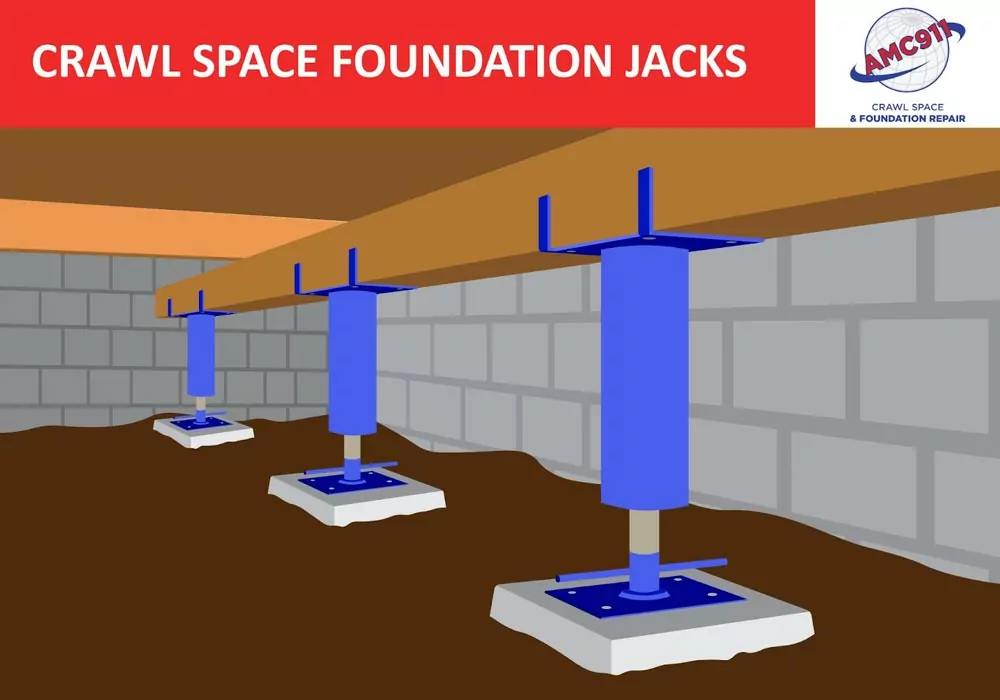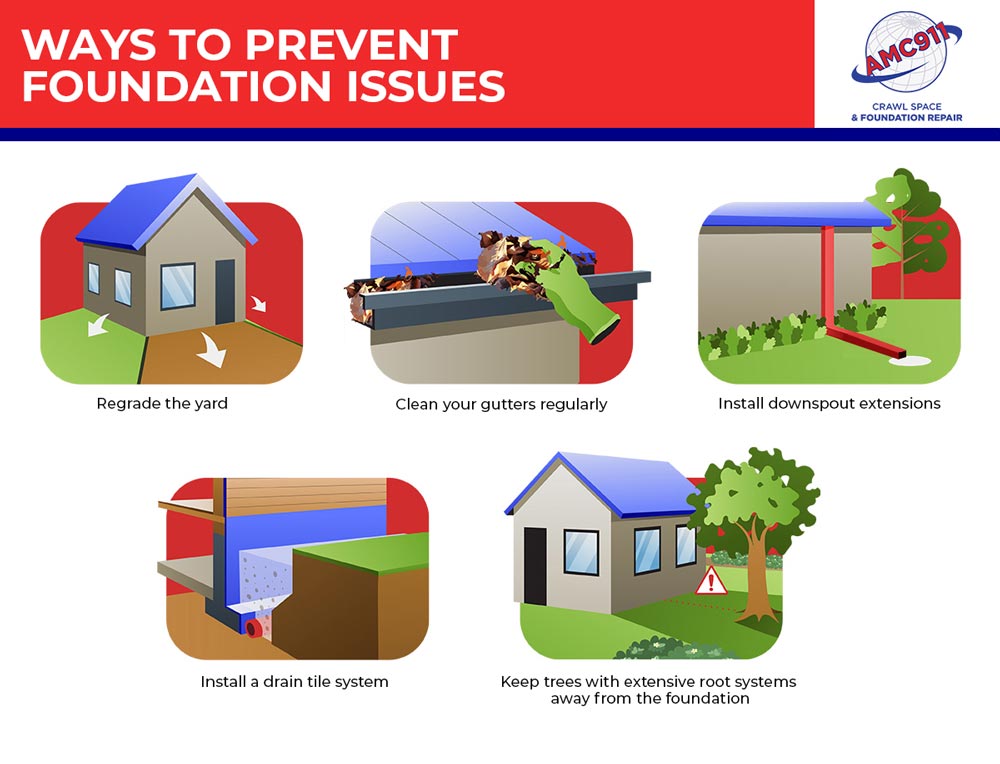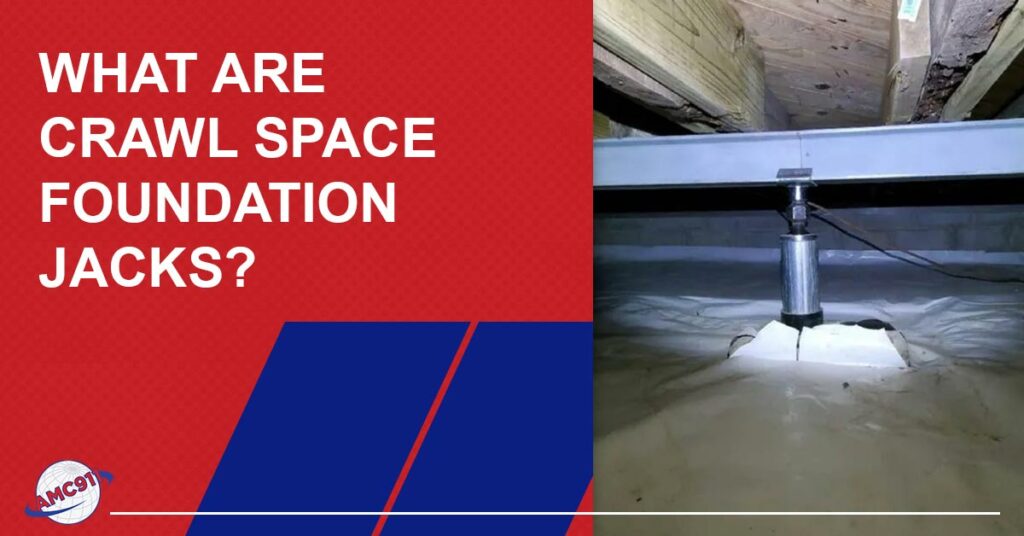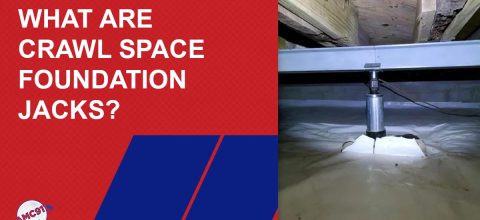Is the floor above your crawl space sagging or uneven? Have you noticed one or more cracks appearing in your walls? Are you having trouble opening and closing doors and windows? If so, there may be a problem with the wooden support structures in your crawl space, and foundation jacks might be the solution.
Foundation jacks are quick to install and can restore the structural integrity of the crawl space in no time. In this blog post, you’ll learn about foundation jacks and how they’re used, why crawl spaces sometimes sag, common signs that you might need foundation jacks, and more.
What Are Crawl Space Foundation Jacks?
Crawl space foundation jacks are a repair solution that supports and stabilizes a home’s foundation. They are used primarily when the wooden support structures in a crawl space cannot support the weight of the structure above it, resulting in wall cracks, doors and windows that no longer open and close correctly, sagging floors, and many other issues. Crawl space foundation jacks are installed within the crawl space and are designed to raise and level the foundation.

Crawl space foundation jacks are available in different sizes and materials, but the most common types are made of steel. Steel crawl space jacks are engineered to withstand tremendous weight and are easy to install, making them a popular choice for both homeowners and contractors alike. They come with adjustable support columns, which allow the jacks to be precisely positioned and leveled to provide the most effective support to the foundation and avoid any further structural damage. The jacks can be installed individually or in groups, depending on the severity of the foundation damage.
Installing Crawl Space Foundation Jacks Is a Job for the Pros
It is important to note that crawl space foundation jacks should only be installed by a qualified professional. The installation requires a comprehensive understanding of the structural engineering principles and safety protocols. In addition, the installation process must consider the individual characteristics of the building the jacks are being installed in, such as the size and weight of the structure, local soil conditions, and other environmental factors.
What Causes a Crawl Space to Sag?
Crawl spaces can sag for various reasons, including the following:
Expansive Soil
One of the primary causes of a sagging crawl space is expansive soil. Expansive soil contains a lot of clay, and because of this, it swells and shrinks in response to changes in moisture content. This creates movement under the foundation and can eventually cause a crawl space to sag.
Poor Drainage
Another common cause of a sagging crawl space is poor drainage, which can cause the soil under the foundation to become soggy. This can cause the support posts in the crawl space to become non-vertical. If this happens, they won’t be able to support the weight of the home, thus leading to a sagging crawl space.
Deteriorated Foundation Jacks
Foundation jacks are used in crawl spaces to provide additional support to the foundation. However, if they don’t have corrosion protection, these jacks can rust or deteriorate over time, weaken, and become unable to support the foundation.
Erosion-Prone Soil
Some soil types are more prone to erosion than others, which can cause the crawl space to sag. For instance, sand and gravel soils can easily erode, leading to foundation instability and sagging.
Wood Rot
Wood rot caused by moisture in the crawl space is another factor that leads to a sagging crawl space. Moisture can accumulate in the crawl space, causing wooden supports to rot and weaken. This situation undermines the foundation’s structural integrity, causing a sagging crawl space.
Too Few Support Piers
If there are not enough support piers, the crawl space’s foundation may not be able to support the weight of the home, causing it to sag.
Common Signs That Your Crawl Space Might Need Foundation Jacks
When it comes to problems with support structures in the crawl space, there are several common signs homeowners should be aware of. These include the following:
- Uneven floors – These can often lead to cracks in the walls or floors and doors and windows that don’t open and close properly.
- Bouncy floors – This occurs when the foundation is not properly supporting the weight of the home, which can cause the floors to feel unstable.
- Wall cracks – These are a sign of inadequate support in the crawl space.
- Musty smell – This is an indicator that there’s probably mold and moisture in the crawl space, which could have caused a problem with the wooden support structures.
- Problems opening and closing windows and doors – This happens because weakened crawl space support structures can throw everything out of plumb.
If you notice any of these signs in your crawl space, it’s essential to contact a foundation repair contractor right away and ask for a crawl space inspection. Crawl space problems that are spotted early cost less to repair.
For more information, see our article Why a High Crawl Space Humidity Level Can Spell Disaster for Your Home.
Tips on How to Help Prevent Crawl Space and Other Foundation Problems
Fortunately, homeowners can take proactive measures to prevent foundation trouble by implementing a few simple maintenance practices. Because most foundation trouble is caused by water, most of the following involve controlling groundwater around the foundation.

- Regrade your yard – This involves ensuring that the soil around the home slopes away from the foundation. This slope should be at least six inches over ten feet so that water can drain effectively. However, a steep incline can cause erosion or make it difficult to mow the lawn properly. Thus, homeowners need to be sure to strike the right balance.
- Clean gutters regularly – Gutters should be cleaned regularly to avoid any blockages that could lead to overflow and saturation of the soil around the foundation.
- Install downspout extensions – These direct water from the roof away from the foundation and allow it to drain on the ground further out.
- Install a drain tile system – A drain tile system consists of gravel-filled pipes that direct water away from the foundation. It is especially helpful in areas with poor drainage, valleys, or plains where groundwater accumulates.
- Keep large trees away from the foundation – Some trees have root systems that are as large as their canopies, and these can cause significant foundation damage if they invade the ground under a house. Keep trees at least 50 feet away from the house.
If you think that your crawl space might need foundation jacks, contact AMC911 today to schedule a free crawl space inspection and receive a repair estimate.















